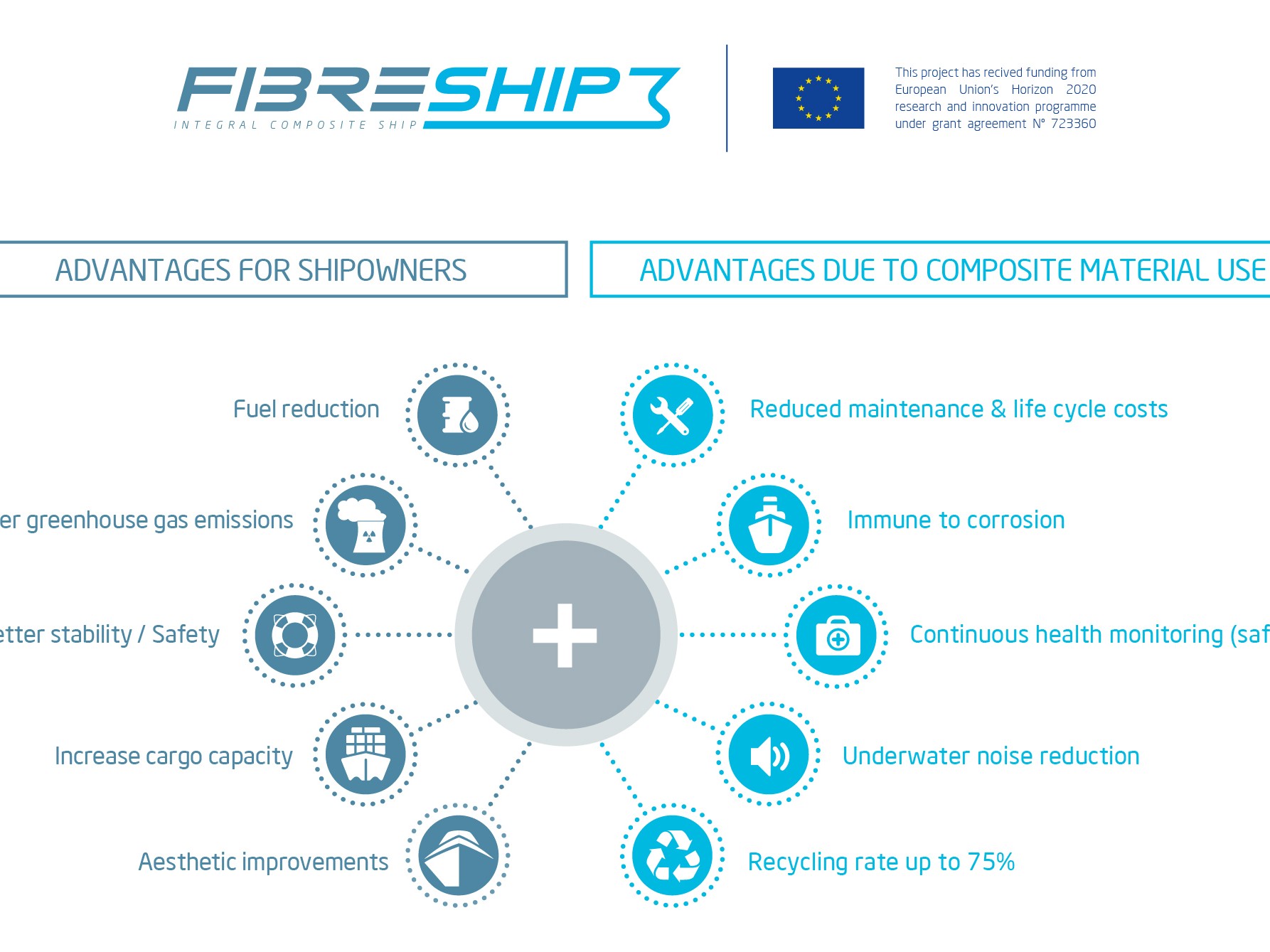FIBRESHIP ACHIEVES SIGNIFICANT ADVANCES IN THE MOST INNOVATIVE PROJECT FOR EUROPEAN SHIPBUILDING
The main objective of the FIBRESHIP project is to generate the regulatory framework for designing and building of large-length ships in FRP material overcoming the technical challenges identified. In order to achieve this goal, the project is qualifying and auditing innovative FRP materials for marine applications, elaborating new designs and production guidelines, generating production and inspection methodologies, and developing numerical software tools capable of assessing the structural performance validated through experimental testing. During the first 18 months of the project, the activities related to the classification and selection of materials, as well as the development of the material computational models have been successfully completed. After a down-selection process among different fibre reinforcement alternatives, seven commercially available resins were chosen for mechanical evaluation in conjunction with the reinforcement. Two fibre/resin systems were finally selected, based on mechanical and fire performance, manufacturability and material cost. Additionally, CINME has developed an innovative computational model capable of simulating the non-linear performance of composite materials based on the Serial/Parallel Mixing Theory (S/P RoM). This method is able to predict different failure modes, such as delamination, matrix cracking or fibre breakage. The S/P RoM model can be understood as a constitutive law manager that provides the response of the composite from the non-linear behavior of its constituent materials. Furthermore, a fatigue numerical model has been coupled to the S/P RoM in order to predict the failure of laminated composites due to fatigue. The fatigue model shows a reduction function which takes into account the cyclic degradation of the materials, the-strength and stiffness, based on the number of cycles, the stress level and the stress ratio. The numerical model is thus able to obtain the stress state of the composite (Serial/Parallel Mixing Theory) and capable of predicting fatigue failure in composites (fatigue damage formulation) considering and distinguishing matrix and fibre failures. The numerical model has been validated using the results from a set of mechanical tests carried out at the University of Limerick (ULIM) within the framework of the FIBRESHIP project (including tensile tests, 3-point bending tests, shear tests and fatigue tests). Once the validation phase was successfully completed, the numerical model has been implemented by COMPASSIS in the commercial CAE software RamSeries v15. Other upgrades are being implemented through the researching carried out in the project. In order to study the fire performance of the composite materials selected, a small-scale fire testing campaign was carried out at VTT premises. These tests provided data on the thermal and fire properties of the materials and information about their behavior in different fire scenarios. Laminates and coatings must be of uniform quality to ensure the fire performance claimed on the basis of fire tests performed. The fire test data obtained are used as input for different numerical models related to pyrolysis modelling, thermomechanical modelling and fire simulation. It must be pointed out that accuracy in the specifications and quality control play a key role in securing the fire safety of products in composite material. Within this phase of the project, state-of-the-art joining techniques in composite materials used in all the engineering sectors was also analyzed in order to optimize the key process of joining different structural parts to give rise to the structure of the vessel. This study carried out by TWI is essential in order to establish the building strategy of the future FRP ships. In the following months, experimental tests of the selected joining techniques will be carried out in order to determine the best options for the different parts of the vessel structure.
Countries
Spain, United Kingdom



